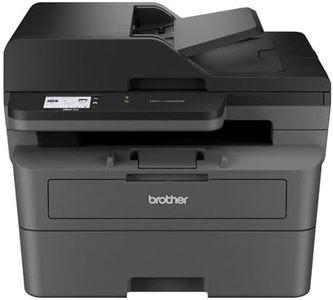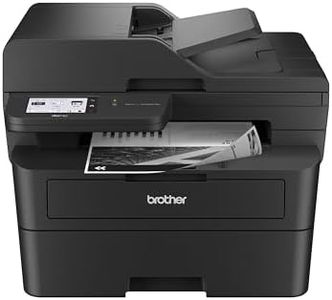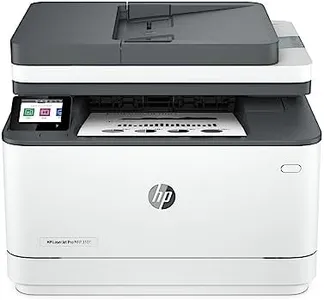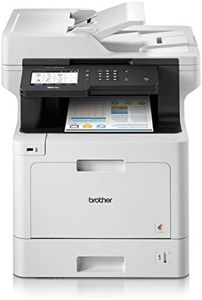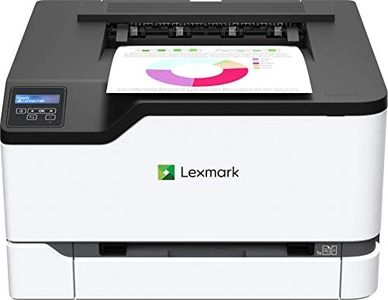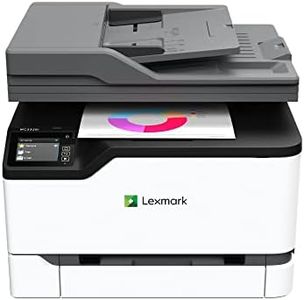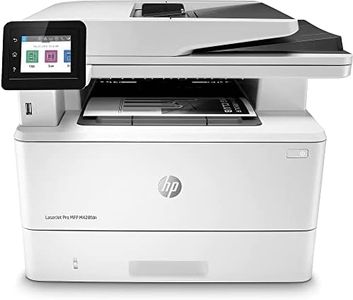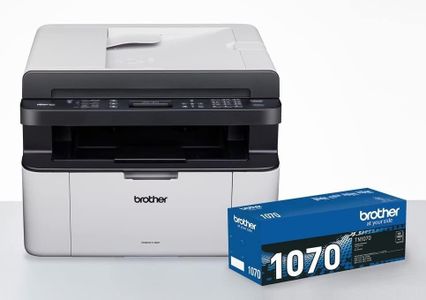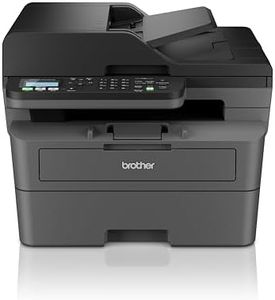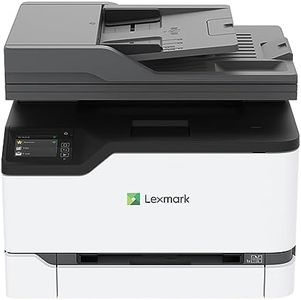We Use CookiesWe use cookies to enhance the security, performance,
functionality and for analytical and promotional activities. By continuing to browse this site you
are agreeing to our privacy policy
10 Best Laser Printer All In One
From leading brands and best sellers available on the web.Buying Guide for the Best Laser Printer All In One
Choosing the right all-in-one laser printer can make a big difference in your daily tasks, whether you're at home or in the office. All-in-one laser printers combine printing, scanning, copying, and sometimes faxing, making them very versatile. When looking for the best fit, it's important to think about how much and how often you'll print, what types of documents you'll handle, and any special features you might need. Focusing on the key specifications will help you narrow down your choices to a machine that meets your needs and works smoothly for your routine.Print Speed (Pages Per Minute - PPM)Print speed is the number of pages the printer can produce in one minute. This matters if you print large documents or need to print often, as a faster printer means less waiting. Print speed often ranges from under 20 ppm (for light, occasional users), around 20-40 ppm (good for most busy homes or small offices), and over 40 ppm (ideal for very high-volume environments). Consider how many pages you typically print at a time—if it's only a few, lower speed may be fine; but if you run business reports often, a higher speed will be more convenient.
Print ResolutionPrint resolution, measured in dots per inch (DPI), tells you how sharp and clear the printed text and images will look. Higher DPI means more detailed prints, but most basic text documents look fine at lower resolutions. Standard office use is usually well-covered at 600 x 600 DPI; if you need crisp graphs, small fonts, or occasional image printing, go for 1200 x 1200 DPI or above. Think about whether you mostly print simple text or need finer detail.
Color or MonochromeLaser printers come in monochrome (black and white) and color models. If you only print text, forms, or basic business materials, a monochrome printer meets your needs and often has lower running costs. If you print presentations, charts, or marketing materials, a color model will be more useful. Decide based on the types of documents you handle most.
Monthly Duty CycleThe monthly duty cycle indicates how many pages the printer is designed to handle in a month without wearing out quickly. This helps you pick a machine that matches your work volume. Light use (under 1,000 pages/month) suits home or small offices, medium (up to 5,000), and high (10,000 or more) are for busy workplaces. Estimate your expected monthly output and choose a printer built for that, as overworking a smaller model can shorten its lifespan.
Automatic Document Feeder (ADF) CapacityAn Automatic Document Feeder lets you scan, copy, or fax multi-page documents without feeding each page by hand. The capacity tells you how many pages it can handle at once, often ranging from 20 to 100 pages. For frequent, multi-page scanning/copying, a higher capacity saves time; for occasional or single-page use, a lower capacity is usually enough. Think about how often and how many pages you'll process at once.
Connectivity OptionsConnectivity refers to how the printer connects to your computer or network, such as via USB, Ethernet (wired network), Wi-Fi, or even mobile printing options. Multiple connectivity methods can make it easier to print from various devices in your environment. If you'll use the printer alone, USB may be enough; for offices or if you need wireless or mobile printing, Wi-Fi or network (Ethernet) are important. Consider who will print and from where.
Paper HandlingPaper handling covers the size and types of paper the printer supports, as well as how many sheets the input and output trays can hold. For regular letter or legal documents, standard trays are fine. If you handle odd sizes, envelopes, or cardstock, make sure your printer can accept those. Also, larger input trays mean fewer refills if you print a lot, while smaller trays are fine for occasional printing. Think about the kind of paper formats you'll need and how often you'll reload paper.
Scan and Copy ResolutionThis specification describes how detailed scanned and copied documents will be. Higher resolutions (measured in DPI) are useful for scanning photos or documents with small text, while lower resolutions will do for regular office paperwork. If you only need to archive receipts or copy contracts, basic resolution is adequate, but for capturing fine details, consider higher numbers.
Duplex Printing and ScanningDuplex means the printer can print or scan on both sides of the paper automatically. This feature saves paper and is convenient for printing longer documents or double-sided materials. If you frequently handle multi-page documents, having automatic duplex can be a big time-saver. If you print single pages or short memos, it might be less important.
